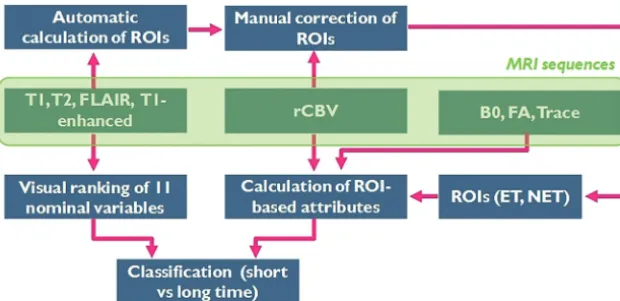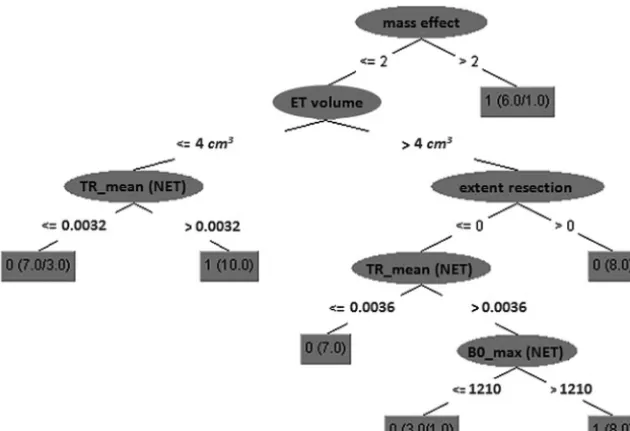Survival Analysis of Patients with High Grade Gliomas Based on Data Mining of Imaging Variables
Full text
Figure




Related documents
The purpose of this study was to evaluate retrospectively whether the tumor maximum relative cerebral blood volume (rCBV) on pretreatment perfusion MR imaging is of prognostic value
Figure 6 shows the comparison of mean absolute tumor volumes for 18 patients in only 19 lesions where MRI, manual delineation, thresholding using 40% and 50% of the maximum
19 We identified the primary tracheal tumors according to the primary site code C33.9, and the search was limited to the period from 1988 to 2015 (informa- tion on tumor size,
(A, B) Genes identified as significantly differentially expressed ( p < 0.05) in Arabidopsis thaliana , as a function of the gDNA hybridisation intensity threshold used
TURBT = transurethral bladder tumor resection; UCB = urothelial carcinoma of bladder; PFS = progression-free survival; RC = radical cystectomy; MIBC = muscle invasive bladder
The purpose of this study was to create synthetic contrast- enhancement images based on a post-GBCA acquisition only and to correlate these with subtraction contrast-enhancement maps
RESULTS: In mean diffusivity or fractional anisotropy maps, 2 spatially distributed WM regions (predominantly located in the bilateral frontal lobes, corpus callosum, and
Probe selection based on gDNA hybridisation intensity increased the number of genes identified as significantly differentially expressed in two published studies of
